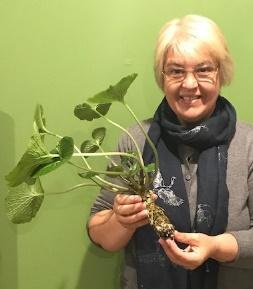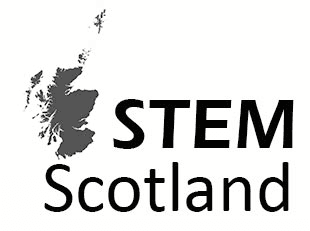
Anatomy of a Science Club; or…
Evolution of a Science Club…

When I decided to set up STEM Scotland, I produced a huge Mind Map of all the things I could include in the business; a Science Club was just one of them. When an opportunity presented itself to run a Science Club, I threw myself into it, unleashing the creative me. It has been great fun! Even the paperwork in a way, as it is so satisfying to do this for a clearly defined purpose.
Resources!
Deciding what experiments are suitable for a Science Club depends on a variety of factors. Fun being crucial! Messy is good. Scientific is essential. Using everyday materials is great; cuts down costs, encourages recycling, and helps make it more visible that science is everywhere (I have been stashing takeaway food tubs for months now).. It’s also important to have actual scientific instruments and equipment you may find in a lab, so that pupils/students have exposure to these and hands-on experience of using them.
Research!
There is a huge amount of material online for science experiments suitable for children; I have spent hours researching, watching YouTube and other clips, partly feeling “guilty” as I was having fun doing this, and taking the time out of my day to do so; I had to keep reminding myself this was work. It was great! My brother reminded me of the legend that is Bill Nye (Science Guy) and from his (Bill’s) video on Bones & Muscles I really loved the few-seconds clip on Dissolving Bones; I will come back to this… An interesting (frustrating?) point to note is that in my searches so far I have come across very few videos with women presenters…I will come back to this too….
Human Communication
Never underestimate the power and value of talking to other people; there is so much we can learn from each other, and sometimes I think this gets forgotten in our increasingly online world. Attending the Scottish Learning Festival (SLF) at the SEC Glasgow (September 2018) gave me so many ideas, from the excellent presentations, the trade stalls, talking to people in sessions and at coffee breaks, and probably most importantly, the STEM Expo 2018! This was a new feature of SLF, where a large room (Lomond) was set aside for real proper hands-on try-it-out sessions for conference participants. Tables/stalls/floor space was occupied by various groups including several schools (pupils and teachers), organisations such as Institute of Physics (IoP, who were presenting their material on gender equality in science), and STEM Glasgow. The children were absolutely fantastic at not letting anyone (me!) pass by without trying out their experiment/creation. What great salespeople never mind budding scientists! I learned about global warming, plastics in the ocean, how to build and test a helicopter, and how to make a catapult among other exciting things. The whole room was buzzing; the enthusiasm was palpable, and the creativity and potential in that room were inspirational! I took as many examples, leaflets, samples and contact details as I could; this became source material for my Science Club ideas and resources. Perhaps most important though, was the clear knowledge that children do want to do science. We need to help them fulfil that early potential and talent.
Experiment Practice (and chickens)
Going back to the bones…I set up an experiment in the kitchen with some bones from the Christmas turkey, in test tubes (herb containers) of red wine vinegar, Pepsi (this one fizzed!) and tap water as a control (pictured below). At the same time as carving off the meat to obtain the bones, I also set up a frying pan with onions and korma sauce, into which I stirred the turkey meat (end result also pictured). This is a very important part of the experiment. I am wondering if there would be interest in making a video series…
The china chicken (you can just make out a corner of it in the pic below) was a Christmas present. We were not quite sure what to do with it, so it has carved a role for itself as a star in the Science Club preparation and delivery.
I then began to wonder; are the properties of bone affected if they are cooked? Maybe I need to use uncooked bones? So I bought an uncooked supermarket chicken; off came the bones (and on went the casserole; I sense a theme developing here). I managed to dissect out the thigh bones, breast bone and rib cage, the latter being particularly challenging but well worth the effort. These bones are now the subject of the first session of Dr Dot’s Science Club, currently resting in vinegar in a box in my garage, and will be reported on at a later date.
Risk Assessment and Insurance
There are several examples online of Risk Assessments (RAs) for various purposes and contexts; I began with looking at the STEM Ambassador resources and followed links from there. The first step to producing an RA for a Science Club is to actually decide just what experiments you want to do (witness the fun I had researching this!). Making the decision I found was perhaps the hardest part, more so than the actual paperwork. However once I had a clear list, I adapted an online template to produce a grid, starting with the list of experiment titles on the left. Opposite each, I detailed the possible hazards; location; who might be affected; the risk rating; control measures; and finally the risk rating after these measures are taken. I also included for clarity an appendix showing how the risk is calculated. This can all be quite time-consuming; but once produced, your own template/draft can then be adapted/updated as required. I was able to complete mine while on the train down to London for the Pharmacology 2018 conference, which was a most satisfying and very productive use of the journey time (possibly more so than if I had been in the office….)!
If running a Science Club, Public Liability Insurance is a good idea; it is not a legal requirement (unlike Employer Liability Insurance), but many organisations can request it or even insist on it, and it makes absolute sense to just have this from the beginning even if it is not required officially. Some companies do not offer Public Liability Insurance for a Science Club and refer you on to a more specialised broker so leave plenty of time to shop around, particularly as there can be quite a bit of to-ing and fro-ing with underwriters before giving a quote.
Timing and Logistics
How many children there are (can you set upper or lower limits?); ages/stages; whether people work in pairs, groups or individually; whether you have any assistance....how best to allocate/divide up equipment; what's the optimum number of set-ups to provide; are there occasions where a demo would be better; how many eyes in the back of your head you have...these all require careful consideration. And be prepared to revise as you go. It goes without saying that planning is absolutely essential, but don't be afraid to completely change or adapt procedures. It could be argued that for a successful well-run Science Club, organisation is just as important as the science (perhaps even more so).
The Bare Bones
So there it is; the Anatomy of a Science Club. To be continued…or evolved….!






